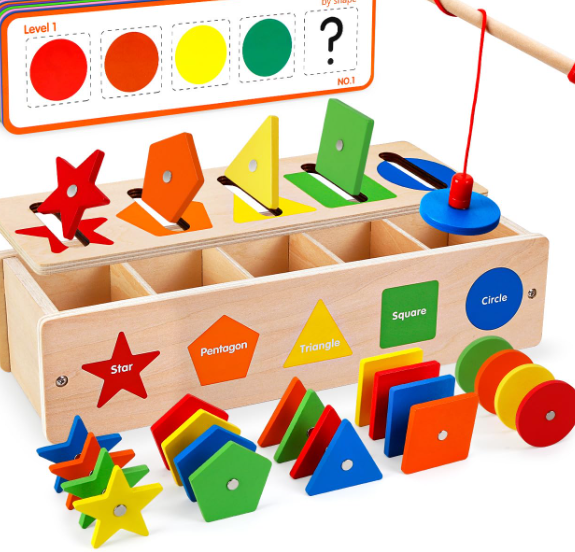Play is more than just fun—it’s a crucial component of early childhood development, shaping cognitive, social, and emotional skills. STEM (Science, Technology, Engineering, and Mathematics) toys are designed to enrich playtime by introducing children to fundamental concepts through hands-on exploration. For toddlers and 2-year-olds, STEM toys offer a stimulating way to learn and grow. This article explores the science behind play and delves into how STEM toys can enhance early childhood development.
Understanding STEM Toys
STEM toys encompass a wide range of educational tools and playthings that encourage children to explore scientific principles, engineering concepts, and mathematical reasoning. These toys are specifically designed to engage young minds and foster a curiosity for learning. Examples include building sets, basic coding kits, and nature exploration tools.
Benefits of STEM Toys for Early Learners
- Cognitive Development: STEM toys stimulate critical thinking and problem-solving skills from a young age. Activities like assembling puzzles or building structures require children to strategize and experiment.
- Introduction to Technology: Early exposure to STEM toys introduces children to basic technological concepts such as circuits, gears, and sensors. This foundational knowledge prepares them for future learning in a digital world.
- Hands-On Learning: Manipulating objects and conducting experiments provide tactile and sensory experiences that enhance understanding and retention of STEM concepts.
Engaging Activities with STEM Toys
- Building and Construction Sets: Toys like building blocks and magnetic tiles encourage spatial awareness, fine motor skills, and creativity. Children learn to construct and deconstruct structures, fostering an understanding of engineering principles.
- Simple Machines: Age-appropriate kits that introduce concepts like gears, pulleys, and levers teach children how basic machines work. These hands-on activities lay the groundwork for understanding mechanics and physics.
- Nature Exploration: STEM toys focused on natural sciences, such as insect observation kits or plant growth experiments, promote curiosity about the environment and ecological awareness.
Integration with Early Learning Curriculum
- STEM in Preschool Education: Many preschools integrate STEM activities into their curriculum to enhance learning outcomes. These activities align with educational standards and promote holistic development.
- Enhancing Classroom Learning: STEM toys are used in daycare and early education settings to engage children in interactive learning experiences. Teachers use them to illustrate scientific principles and encourage collaborative problem-solving.
- Home Learning Environments: Parents can supplement formal education with STEM toys at home. Setting up simple experiments or exploring nature together helps reinforce classroom learning and spark curiosity.
Encouraging Creativity and Innovation
- Open-Ended Play: STEM toys often allow for open-ended exploration, where children can experiment and discover at their own pace. This freedom encourages creativity and innovation as children find unique solutions to challenges.
- Project-Based Learning: Engaging children in long-term projects, such as building a model city or designing a simple robot, promotes planning, teamwork, and perseverance.
- Incorporating Arts: Integrating artistic elements, such as drawing diagrams or creating sculptures related to STEM concepts, provides a well-rounded approach to learning that integrates creativity with technical skills.
Parental Involvement and Support
- Choosing Age-Appropriate Toys: Parents should consider their child’s developmental stage when selecting STEM toys. Look for toys that match their interests and abilities to ensure engagement and learning.
- Playing Together: Actively participate in STEM play with your child to enhance their learning experience. Ask questions, provide encouragement, and celebrate their discoveries to foster a positive attitude towards learning.
- Supporting Curiosity: Encourage your child to ask questions and explore their interests during STEM activities. Provide resources and opportunities for further exploration to nurture their natural curiosity.
Success Stories and Real-Life Examples
Many parents and educators have witnessed the transformative impact of STEM toys on children’s development. For instance, a parent shared how their child developed a passion for engineering after building intricate structures with building sets. In another example, a teacher noted significant improvements in students’ problem-solving skills and scientific understanding through hands-on STEM projects.
Conclusion
STEM toys offer a dynamic and effective way to enhance early childhood development by integrating play with learning. By introducing children to STEM concepts through engaging activities, parents and educators can inspire curiosity, critical thinking, and creativity from a young age. Embracing STEM education in playtime prepares children for future academic success and fosters a lifelong love for learning and innovation.read more
